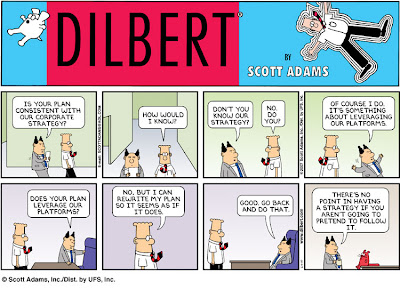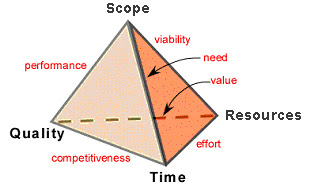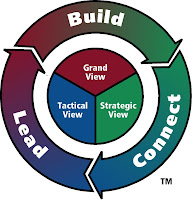
When the stakes are high, how do you enable your team to collaborate as a team?
###
SOMERS, N.Y. — It’s every worker’s dream: take as much vacation time as you want, on short notice, and don’t worry about your boss calling you on it. Cut out early, make it a long weekend, string two weeks together — as you like. No need to call in sick on a Friday so you can disappear for a fishing trip. Just go; nobody’s keeping track.
That is essentially what goes on at I.B.M., one of the cornerstones of corporate America, where each of the 355,000 workers is entitled to three or more weeks of vacation. The company does not keep track of who takes how much time or when, does not dole out choice vacation times by seniority and does not let people carry days off from year to year.
Instead, for the past few years, employees at all levels have made informal arrangements with their direct supervisors, guided mainly by their ability to get their work done on time. Many people post their vacation plans on electronic calendars that colleagues can view online, and they leave word about how they can be reached in a pinch.
“It’s like when you went to college and you didn’t have high school teachers nagging you anymore,” said Mark L. Hanny, I.B.M.’s vice president of independent software vendor alliances. “Employees like that we put more accountability on them.”
But the flip side of flexibility, at least at I.B.M., is peer pressure. Mr. Hanny and other I.B.M. employees, including his assistant, Shari Chiara, say that they frequently check their e-mail and voice mail messages while on vacation. Bosses sometimes ask subordinates to cancel days off to meet deadlines.
Some workplace experts say such continued blurring of the boundaries between work and play can overtax employees and lead to health problems, particularly at companies where there is an expectation that everyone is always on call.
“If leadership never takes time off, people will be skeptical whether they can,” said Kim Stattner of Hewitt Associates, a human resources consultant. “There is the potential for a domino effect.”
Frances Schneider, who retired from an I.B.M. sales division last year, after 34 years, said one thing never changed; there was not one year in which she took all her allotted time off.
“It wasn’t seven days a week, but people ended up putting in longer hours because of all the flexibility, without really thinking about it,” Ms. Schneider said. “Although you had this wonderful freedom to take days when you want, you really couldn’t. I.B.M. tends to be a group of workaholics.”
I.B.M. officials said they have no idea whether workers take more or fewer days off now than before, and have not studied the policy’s effect on efficiency.
But they point to employee surveys showing that the self-directed work and vacation policy is one of the top three reasons workers choose to stay there.
“Change is change,” said Richard Calo, vice president of global workforce relations. “We had some initial questioning of it. But at the end of the day, you remember how much time you spent. This wasn’t a difficult sell.”
/// With the Tangible Vision, the Compass team adjusts to changes as a team.
Mr. Calo, the human resources chief, said that the open-ended vacation policy is “not a total license to do whatever you want to do,” and that workers are expected to produce quality work, even if the company is not paying attention to when or where they complete it.
The hands-off approach to vacation time, which gradually took hold over the past decade, has come amid I.B.M.’s shift from engineering and manufacturing into services like consulting and is part of a broader demise of old notions of eight hours’ pay for eight hours’ work at a fixed location.
Aided by broadband connections, cellphones and video conferencing software, 40 percent of I.B.M.’s employees have no dedicated offices, working instead at home, at a client’s site, or at one of the company’s hundreds of “e-mobility centers” around the world, where workers drop in to use phones, Internet connections and other resources.
/// This is the future. Employees with no dedicated offices, working instead at home, at a client’s site, or at one of the company’s hundreds of “e-mobility centers” around the world, where workers drop in to use phones, Internet connections and other resources. ///
/// With the Tangible Vision, a project team collaborate anywhere.
Long a trendsetter in human resources — it began offering family leave in the 1950s — I.B.M. is probably the largest company to do away so completely with tracking vacation, although a number of newer, smaller firms have similar policies.
Best Buy has introduced a program called Results Oriented Work Environment for its 4,000 corporate employees, giving them freedom to do their jobs without regard to the hours they put in daily.
Motley Fool, the online investment adviser, has, since its founding 13 years ago, let employees take as many paid vacation or sick days as they need; the company’s director of human resources, Lee Burbage, said that most of its 180 workers take three to four weeks a year. Netflix, the online DVD distributor, no longer allots specific numbers of vacation days to its 400 salaried employees.
“When you have a work force of fully formed professionals who have been working for much of their life,” Patty McCord, the chief talent officer of Netflix, said, “you have a connection between the work you do and how long it takes to do it, so you don’t need to have the clock-in and clock-out mentality.”
/// The higher one climbs in the corporate value chain, the greater the emphasis is on the management and mastery of information. ///
I.B.M.’s vacations-without-boundaries system started in the early 1990s, when managers in the human resources, finance and technology departments questioned whether tracking days off helped the company grow — and some complained that it was an administrative burden.
So the company stopped counting days in a few departments, then gradually expanded the new policy. Since 2003, it has covered everyone in the company, from the chief executive, Samuel J. Palmisano, who has a vacation house in Kennebunkport, Me., to workers at I.B.M.’s chip and server factories in East Fishkill and Poughkeepsie, N.Y.
Luis H. Rodriguez, the director of market management in I.B.M.’s software group, said he visits his office here in Somers about once a week, working the rest of the time on the road or at his home in Ridgefield, Conn., where he sat one recent afternoon at the kitchen table with his laptop open.
He said that in six years at I.B.M. he can recall only one time when he asked a co-worker not to take a long weekend off — when their group was about to buy another company — and that calling colleagues or checking e-mail while visiting relatives in Texas or Illinois is a fair trade for being able to work from home so he can spend more time with his children, Alec, 5, and Evia, 2.
“I get an incredible amount of flexibility from the company, but it cuts both ways,” he said. “Because people’s schedules and needs are so structured, you need flexibility at work.”
/// The Tangible Vision handles this matter by displaying the team management priorities in term of changes and contingencies. ///
For most companies, keeping track of time worked and time off remains a critical and transparent benchmark for workers and bosses. It is also a necessity in factories, call centers, restaurants and other workplaces where business would grind to a halt if managers were unable to predictably have enough employees on hand.
“If you look at the organizations that have done more radical things, they tend to be technology companies with salaried people,” where flexibility in job performance “is embedded into the culture of the place,” noted Max Caldwell, a managing principal in the work force effectiveness area at Towers Perrin, a human resources consultant.
Indeed, I.B.M.’s Mr. Calo said that the flexibility has helped the company compete with the more freewheeling atmosphere at start-up rivals in the technology world that have lured away some of its talent over the years.
“We have a reputation of not being as hip as a Google or a Netflix,” he said. “You don’t have to be the coolest guy on the block, but you don’t have to be the Big Blue nerd, either.”
http://www.nytimes.com/2007/08/31/nyregion/31vacation.html?
###























